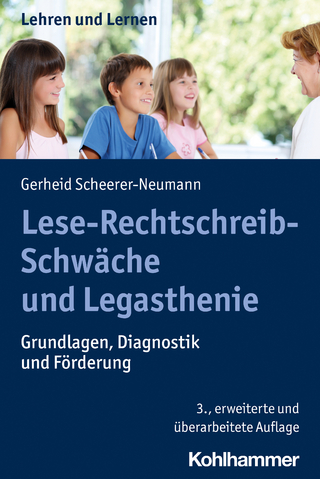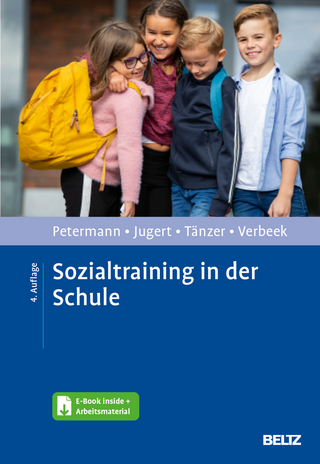
Handbook of Resilience in Children
Springer International Publishing (Verlag)
978-3-031-14730-2 (ISBN)
The third edition of this handbook addresses not only the concept of resilience in children who overcome adversity, but it also explores the development of children not considered at risk addressing recent challenges as a consequence of the COVID-19 pandemic. The new edition reviews the scientific literature that supports findings that stress-hardiness and resilience in all children leads to happier and healthier lives as well as improved functionality across the lifespan. In this edition, expert contributors examine resilience in relation to environmental stressors as phenomena in child and adolescent disorders and as a means toward positive adaptation into adulthood.
The significantly expanded third edition includes new and significantly revised chapters that explore strategies for developing resilience in families, clinical practice, and educational settings as well as its nurturance in caregivers and teachers. Key areas of coverage include:
- Exploration of the four waves of resilience research.
- Resilience in gene-environment transactions.
- Resilience in boys and girls. Resilience in family processes.
- Asset building as an essential component of intervention.
- Assessment of social and emotional competencies related to resilience.
- Building resilience through school bullying prevention.
- Resilience in positive youth development.
- Enhancing resilience through effective thinking.
The Handbook of Resilience in Children, Third Edition, is an essential reference for researchers, clinicians and allied practitioners, and graduate students across such interrelated disciplines as child and school psychology, social work, public health as well as developmental psychology, special and general education, child and adolescent psychiatry, family studies, and pediatrics.
Sam Goldstein obtained his Ph.D. in School Psychology from the University of Utah and is licensed as a Psychologist and Certified School Psychologist in the state of Utah. He is also board certified as a Pediatric Neuropsychologist and listed in the Council for the National Register of Health Service Providers in Psychology. He is a Fellow of the American Psychological Association and the National Academy of Neuropsychology. He is an Adjunct Assistant Professor in the Department of Psychiatry, the University of Utah School of Medicine. He has authored, co-edited, or co-authored over fifty clinical and trade publications, three dozen chapters, nearly three dozen peer-reviewed scientific articles, and eight psychological and europsychological tests. Since 1980, he has served as Clinical Director of The Neurology, Learning, and Behavior Center in Salt Lake City, Utah.
Robert B. Brooks obtained his Ph.D. in Clinical Psychology from Clark University in Worcester, MA, and completed a postdoctoral fellowship at the University of Colorado Medical School in Denver. He is board certified in Clinical Psychology and listed in the Council for the National Register of Health Service Providers in Psychology. He is currently on the faculty of Harvard Medical School (part-time) and is Former Director of the Department of Psychology at McLean Hospital, a private psychiatric hospital. He has authored, co-edited, or co-authored 19 books and, in addition, authored or co-authored almost three dozen chapters and more than three dozen peer-reviewed scientific articles. He has received numerous awards for his work, including most recently the Mental Health Humanitarian Award from William James College in Massachusetts for his contributions as a Clinician, Educator, and Author.
Part I: Overview.- Chapter 1 The Continuing Study of Resilience in Times of a Pandemic: This is Why We Study Childhood Resilience.- Chapter 2 Resilience Processes in Development: Multisystem Integration Emerging from Four Waves of Research.- Chapter 3 Resilience in Gene-Environment Transactions.- Chapter 4 Relational Resilience in Girls.- Chapter 5 What Can We Learn About Resilience from Large-Scale Longitudinal Studies?.- Part II: Resilience as a Phenomenon in Childhood Challenges.- Chapter 6 Resilience in Situational and Cultural Context.- Chapter 7 Appreciating and Promoting Resilience in Families.- Chapter 8 Resilience and the Disruptive, Impulse Control and Conduct Disorders of Childhood.- Chapter 9 From Helplessness to Optimism: The Role of Resilience in Treating and Preventing Depression in Youth.- Chapter 10 Resilience and Self-Control Impairment.- Part III: Assessment of Resilience.- Chapter 11 Measuring Resilience in Children: From Theory to Practice.- Chapter 12 Assessment of Social Emotional Competencies in Educational Settings.- Chapter 13 Assessing Resiliency in Children, Adolescents and Young Adults.- Chapter 14 Assessment of Resilience with the Risk Inventory and Strengths Evaluation (RISE).- Part IV: Resilience in Family and Community Settings.- Chapter 15 Comprehensive Interventions to Foster Resilience in Children With Complex Trauma.- Chapter 16 Building Resilience in Juvenile Offenders.- Chapter 17 Cultivating Resilience in LGBTQ+ Youth.- Chapter 18 Resilience and Positive Youth Development: A Dynamic, Relational Developmental Systems-Based Perspective.- Chapter 19 A Resilience Framework for Treating Child Trauma.- Chapter 20 Promoting Resilience in Families.- Chapter 21 The Power of Parenting.- Chapter 22 Building Resilience in Children: A Public Health Equity Approach.- Chapter 23 Enhancing the Process of Resilience Through Effective Thinking.- Part V Resilience in School Settings.- Chapter 24 Re-thinking Approaches to Fostering Academic Resilience.- Chapter 25 Resilience and the Child with Learning Disabilities.- Chapter 26 Resilience through Violence and Bullying Prevention in Schools.- Chapter 27 Caring for the Caregiver: Promoting the Resilience of Educators.- Chapter 28 Enhancing Resilience in Classrooms.- Chapter 29 School Climate Improvement: A Data-Driven Strategy That Supports.- Chapter 30 Nurturing Positive Emotions in the Classroom: A Foundation for Purpose.- Chapter 31 The BARR Model: Fostering Resilient School Systems, Staff and Students.- Part VI Conclusions.- Chapter 32 After Resilience, What?
| Erscheinungsdatum | 13.03.2024 |
|---|---|
| Zusatzinfo | XXI, 601 p. 15 illus., 2 illus. in color. |
| Verlagsort | Cham |
| Sprache | englisch |
| Maße | 178 x 254 mm |
| Themenwelt | Geisteswissenschaften ► Psychologie ► Pädagogische Psychologie |
| Medizin / Pharmazie ► Medizinische Fachgebiete ► Psychiatrie / Psychotherapie | |
| Schlagworte | adverse childhood experiences (ACEs) • Bullying, violence, and resilience • Child maltreatment and resilience • Clinical settings, schools, and resilience • Conner-David Resilience Scale • Cultures and resilience • Depression and resilience • Disruptive disorders and resilience • Emotion regulation and resilience • Family violence and resilience in children • Genes, environment and resilience • Girls, young females and resilience • Juvenile offenders and resilience • Learning disabilities, classrooms and resilience • LGBTQ youth and resilience • Protective and compensatory experiences (PACEs) • Resiliency Scales for Children and Adolescents • Risk inventory and strengths evaluation • School climate and resilience • Socioemotional development and resilience |
| ISBN-10 | 3-031-14730-8 / 3031147308 |
| ISBN-13 | 978-3-031-14730-2 / 9783031147302 |
| Zustand | Neuware |
| Informationen gemäß Produktsicherheitsverordnung (GPSR) | |
| Haben Sie eine Frage zum Produkt? |
aus dem Bereich


